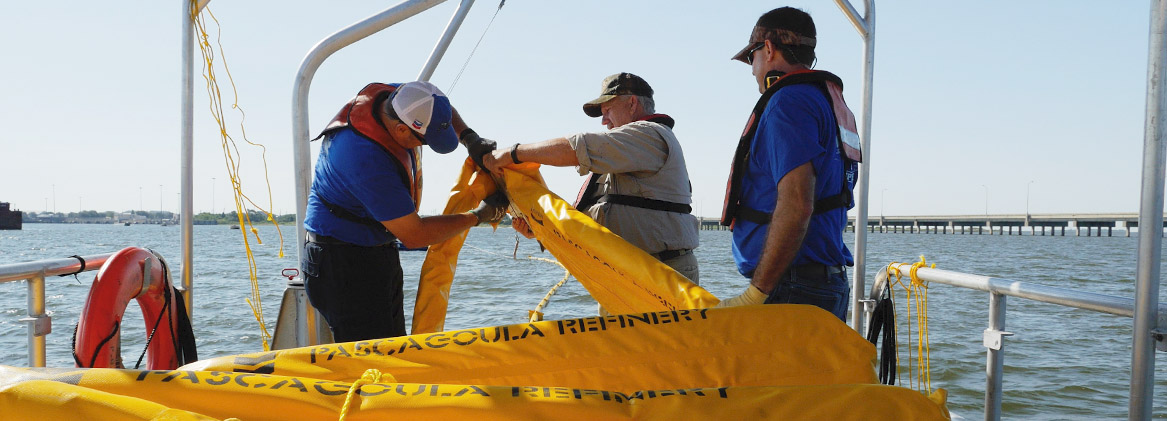oil spill prevention and preparedness

oil spill preparedness
The refinery maintains an extensively trained Pascagoula Marine Response Team and regularly conducts drills and exercises. We maintain a fleet of vessels and response equipment to quickly and effectively respond to oil spills. Our Marine Response team is prepared to respond immediately. Oil recovered from a spill would be pumped into a storage tank for recycling.
As part of the refinery’s oil spill preparedness, members of Pascagoula Marine Response Team designed and had constructed a one-of-a-kind wildlife rehabilitation unit – the first fully-equipped oiled wildlife rehab unit in the world that can be transported by air.
Built by Featherlite to rigorous specifications, the trailer is 108 inches in height, the maximum height commercial air carriers can accommodate. On the ground, the trailer can be pulled by a standard truck (one or two ton) with the proper hitch.
The 38-by-8-foot trailer contains all the specialized equipment required to evaluate, clean and rehabilitate oiled wildlife. It is also equipped with the laboratory facilities required by a veterinarian during the response and rehabilitation period. This trailer was utilized in support of the Deepwater Horizon spill event in 2010.
spill & air protection
At the marine terminal, the cargo of crude oil is discharged through pipelines to storage tanks in the refinery. The marine terminal also has eight berths to load refined products. About 70 percent of all refinery products leave the refinery via ship or barge. Wharf operators receive ships from such places as Mexico and South America.
We also take care to protect air quality at our marine terminal. In 1999, Chevron installed a Marine Vapor Recovery (MVR) system at the marine terminal to control vapors of volatile organic compounds (VOCs) that are generated during cargo loading.
The MVR system complies with the Clean Air Act’s regulations for control of VOC emissions from tank vessels that carry oil and chemicals in bulk.